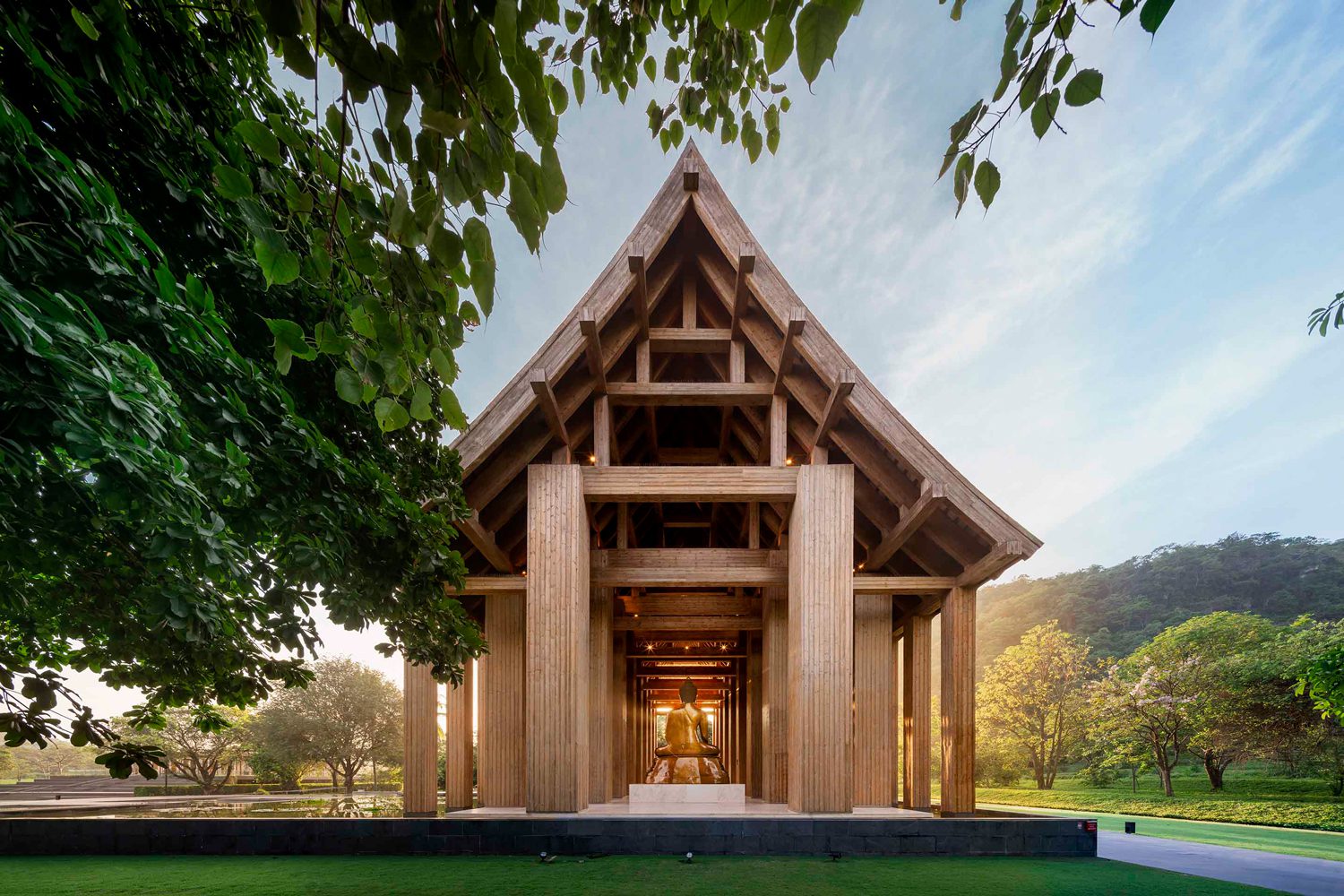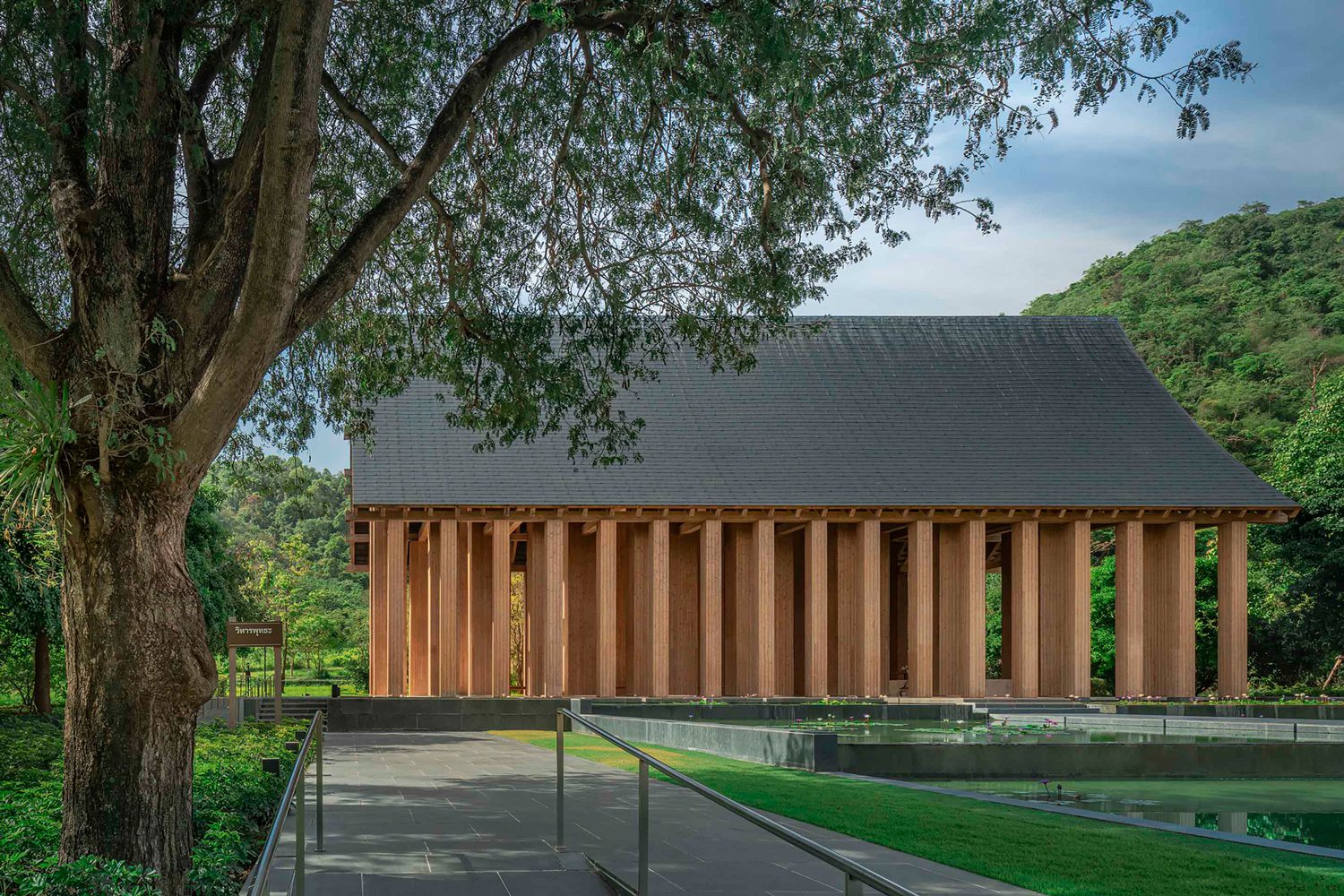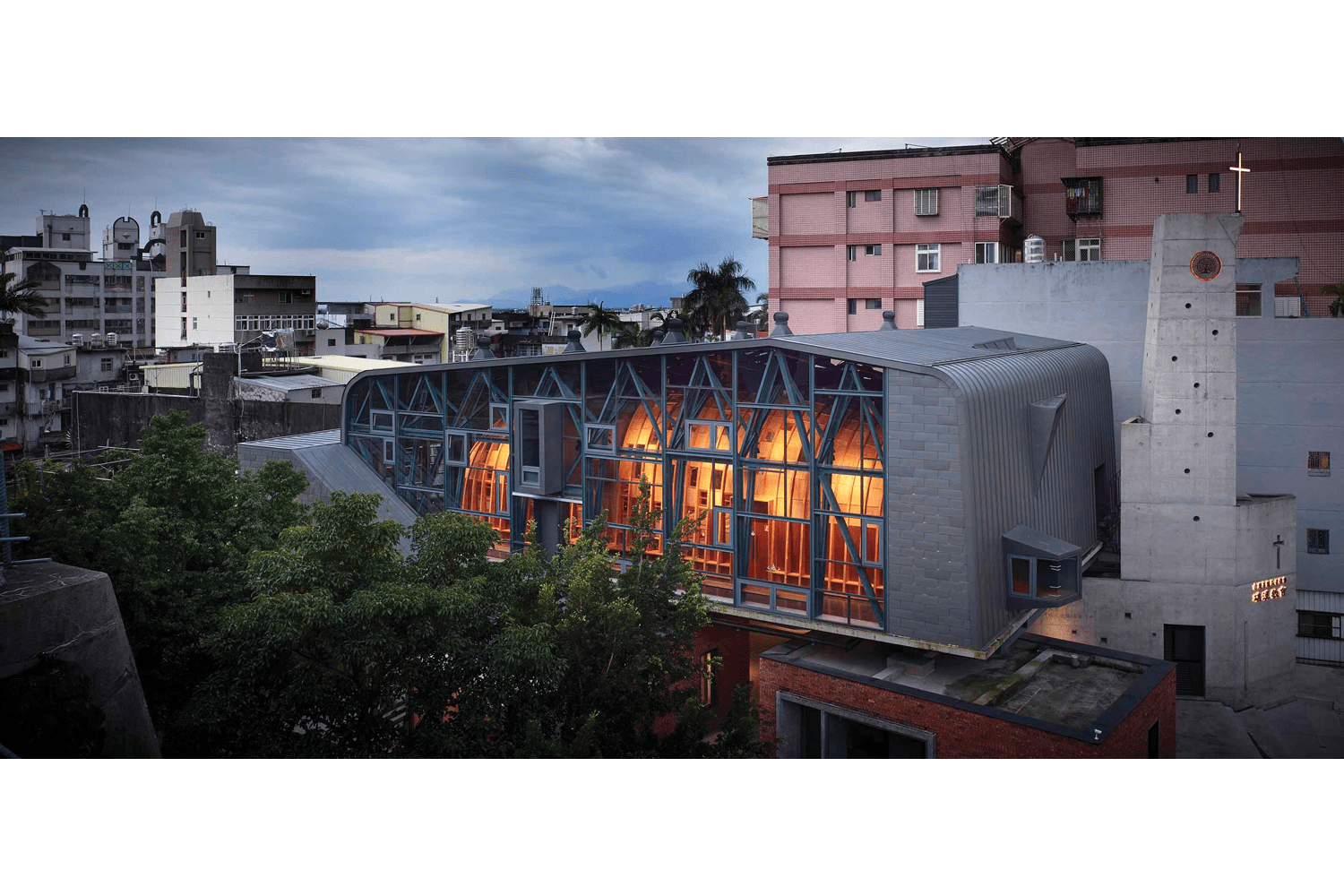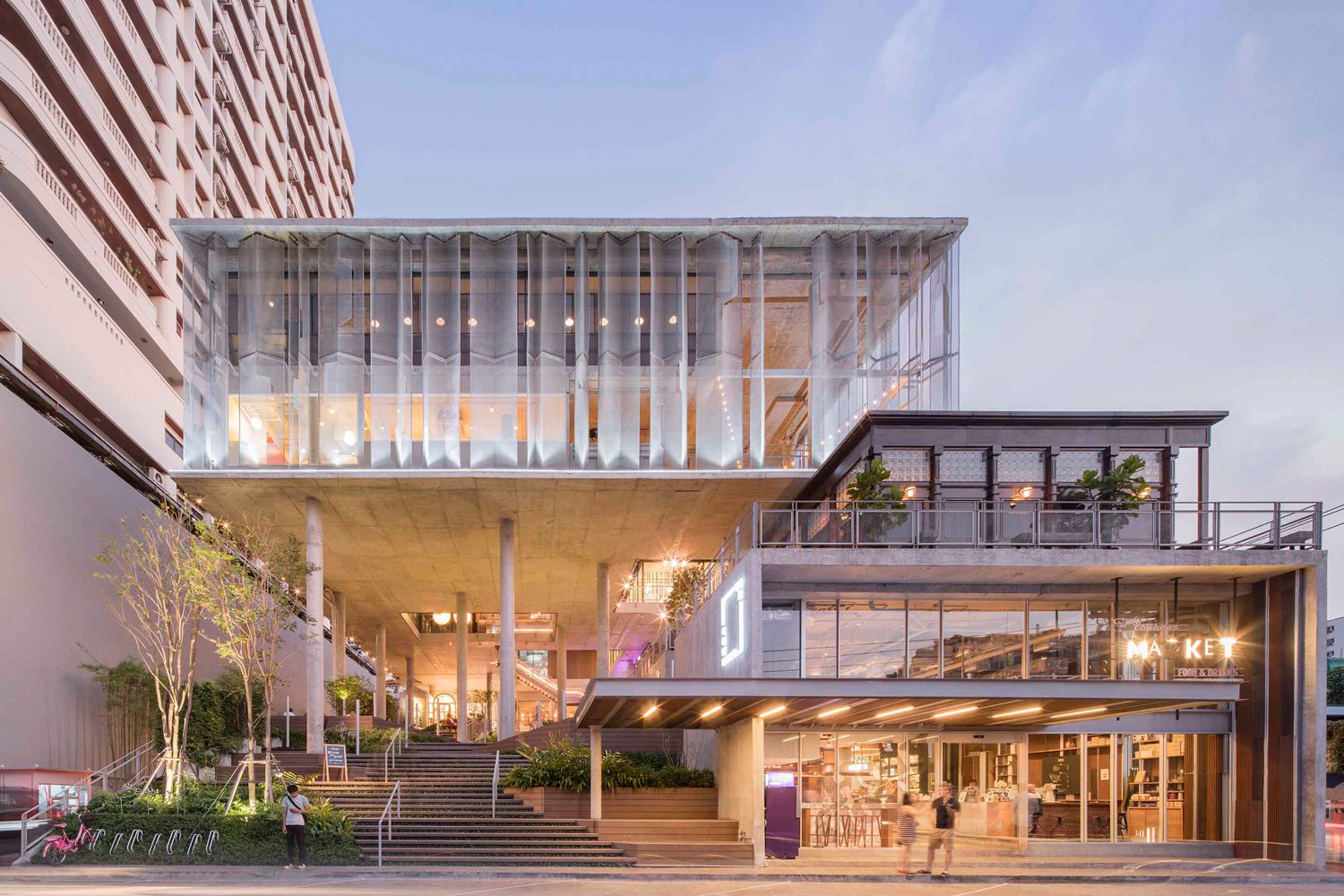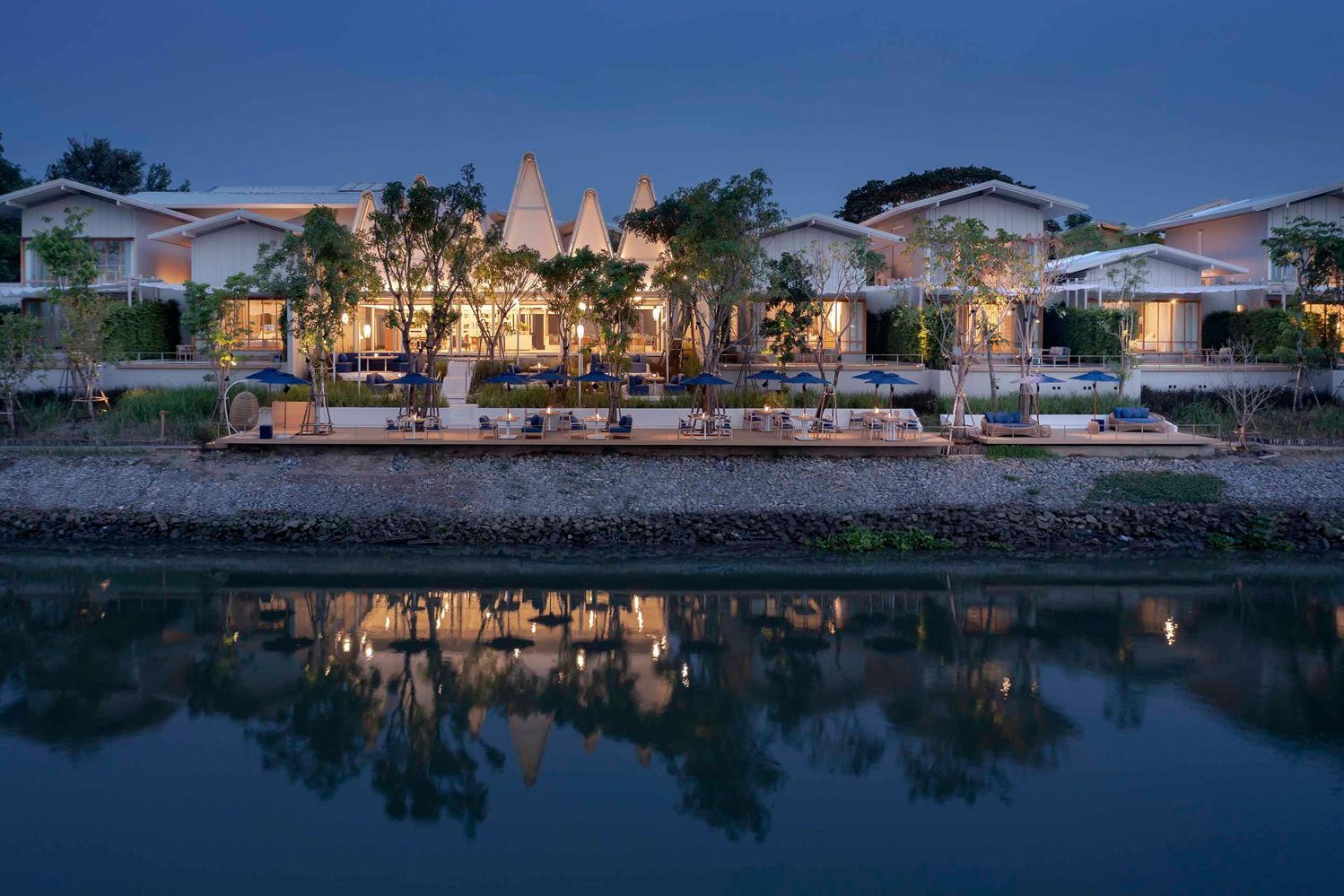
THE EXHIBITION IN BACC PRESENTS CONTEMPORARY ARCHITECTURAL WORKS BY 8 DESIGN STUDIOS FROM THAILAND AND TAIWAN, UNRAVELING THE CONNECTION BETWEEN ARCHITECTURE AND THE EARTH ON WHICH IT IS SITUATED
TEXT: HAS DESIGN AND RESEARCH
PHOTO CREDIT AS NOTED
(For English, press here)
The first architectural exhibition at the Bangkok Art and Culture Center (BACC) in 2023 will officially open on Tuesday, July 18. “Infinity Ground – Thailand and Taiwan Contemporary Architecture Exhibition” is organized by The Association of Siamese Architects Under Royal Patronage and Taipei Economic and Cultural Office in Thailand, sponsored by the Ministry of Culture (Taiwan) , and in cooperation with Chulalongkorn University – Faculty of Architecture, King Mongkut’s Institute of Technology Ladkrabang – School of Architecture, Art, and Design, King Mongkut’s University of Technology Thonburi – School of Architecture and Design, and Silpakorn University – Faculty of Architecture.
The principal curators are Jenchieh Hung, who is the exhibition chairman of The Association of Siamese Architects Under Royal Patronage, and Kulthida Songkittipakdee, who is the co-founder and principal architect of HAS Design and Research. They curated eight architectural firms from Thailand and Taiwan to participate in the exhibition, including Architects 49 Limited (A49), Arsomsilp Community and Environment Architect, Duangrit Bunnag Architect Limited (DBALP), Department of ARCHITECTURE, Ambi Studio, MAYU architects, Behet Bondzio Lin Architekten, and Atelier Or.

Photo courtesy of HAS design and research
Among the eight architectural firms, their exhibited architectural works are in Bangkok, Pattaya, Pathum Thani, Samut Sakhon, Nakhon Ratchasima, and Phra Nakhon Si Ayutthaya in Thailand; and Hsinchu, Nantou, Yunlin, Kaohsiung, Pingtung, and Yilan in Taiwan, where different cultural backgrounds, different climatic conditions, and diverse social developments are indirectly or directly expressed in how the building responds to the characteristics of the ground.
‘Infinity Ground – Thailand and Taiwan Contemporary Architecture Exhibition’ takes the earth as the interface, connecting all of nature as a background story. On the undulating surface, it provides conditions for the interdependence of people, buildings, and nature and balances the operating mechanisms of the environment. More than a century ago, German geologist Alfred Lothar Wegener wrote a book called The Origin of Continents and Oceans and explained that the earth is aggregated into a Pangea, surrounded by the waters of the Panthalassa, which later began to drift and split to form the basic landforms of the seven continents and five oceans.
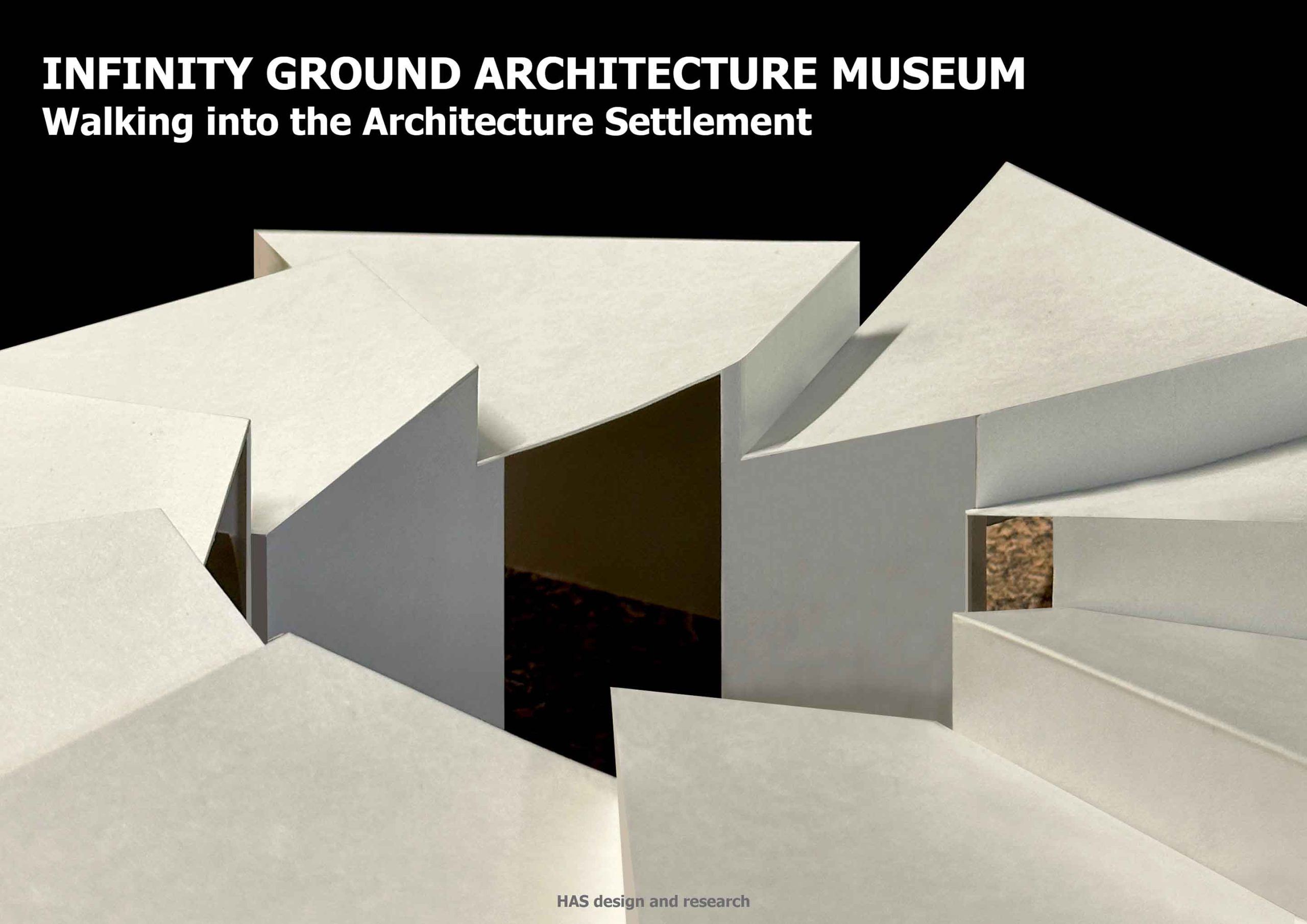
Photo courtesy of HAS design and research
The exhibition continues the perspective of the ‘drift’ and ‘aggregation’ of the earth, presenting Thailand and Taiwan contemporary architecture in two chapters, ‘Ground Exchanges’ and ‘Feeling Grounds’, which show new human and nature lifestyles based on the common earth’s ground: togetherness, ritual, native, porosity, extra-ordinary, nostalgic, vernacular, and boundaryless.
In the first chapter of ‘Ground Exchanges’, the architect used modern construction methods to frame the unique site scenery and reflect the rich characteristics of the ground. Such as Architects 49 Limited’s Velaa Sindhorn Village Langsuan (2019) and Singha D’luck Cinematic Theater (2017) , the elevated buildings, provide a place for public communication. The space is like trees scattered randomly, and the light and monsoon make the building’s skin have a unique effect.
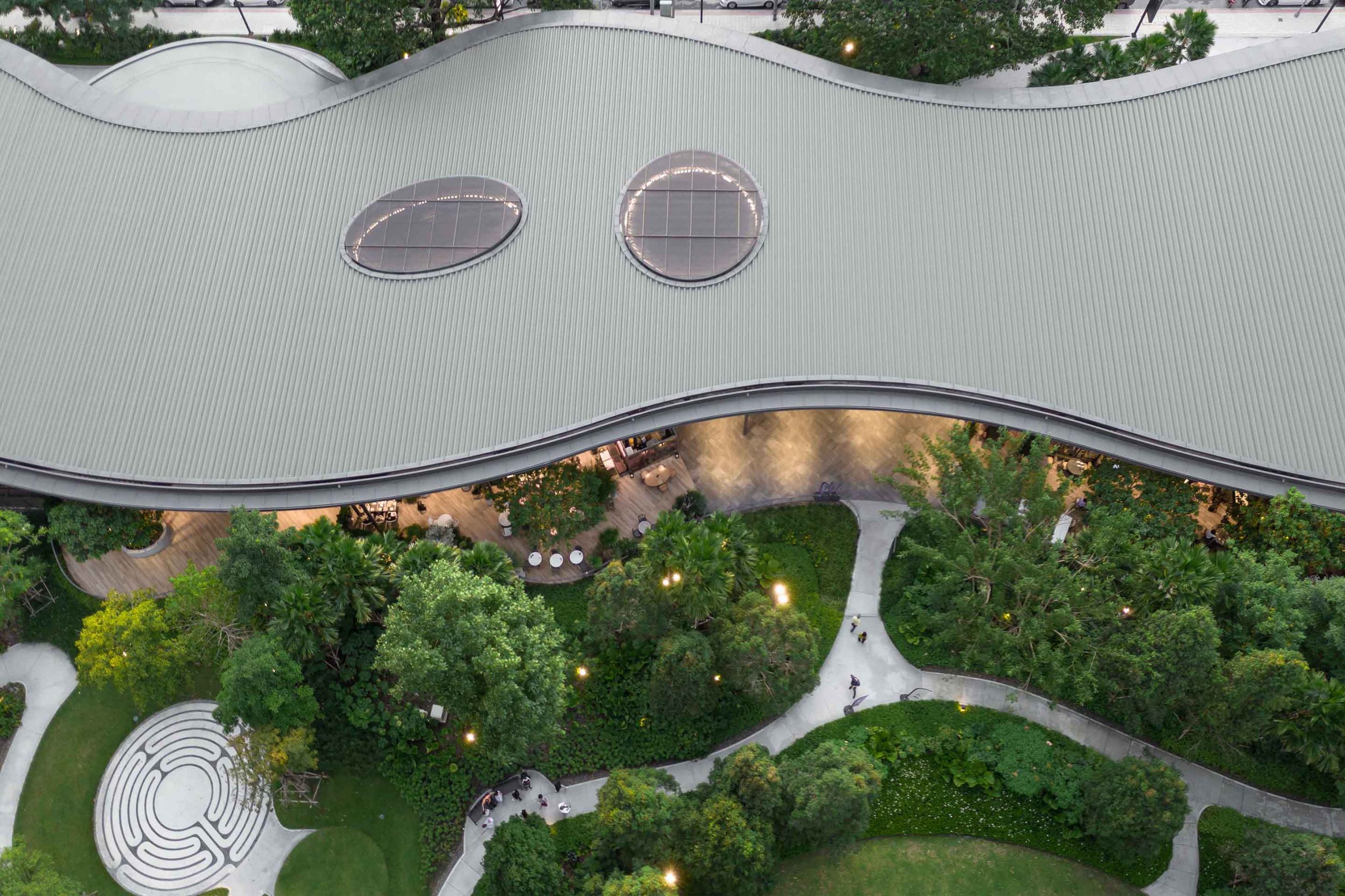
Velaa Sindhorn Village Langsuan, Bangkok, Thailand by Architects 49 Limited | Photo: W Workspace

Singha D’luck Cinematic Theatre, Pattaya, Thailand by Architects 49 Limited | Photo: Chaovarith Poonphol
Furthermore, Behet Bondzio Lin Architekten’s Eternal Hill Columbarium (2022) and House of Roofs (2016) , the designs responding to Taiwan’s tropical and rainy climate, also show the sacred senses of the ground. Third, in Duangrit Bunnag Architect Limited’s The Glass Temple (2020) and Residence Prachachuen (2020) , the architecture endows the site with ceremonial and eternal features, combining with the surrounding environment to strengthen the sense of the infinite scale of the ground.
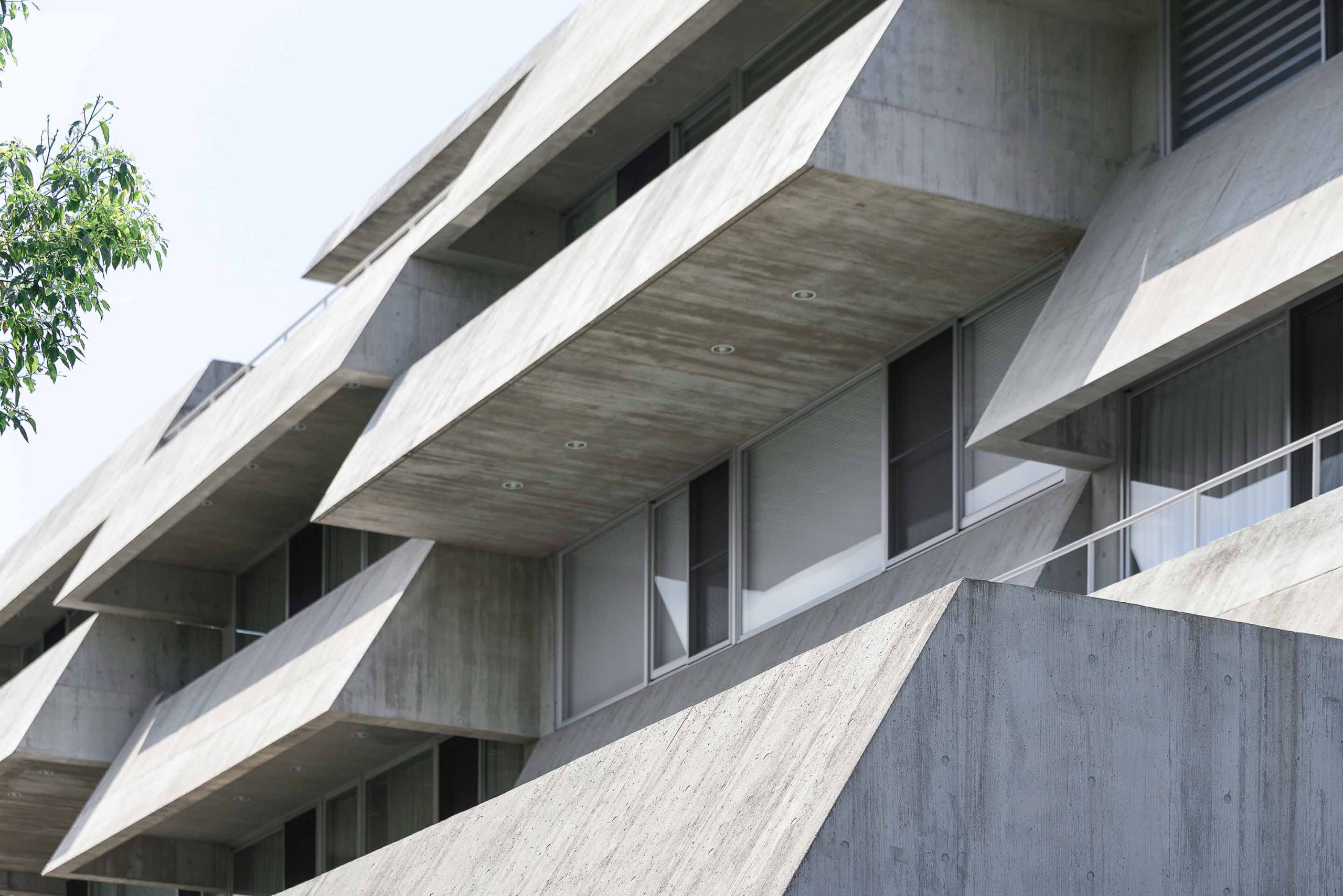
House of Roofs, Pingtung, Taiwan by Behet Bondzio Lin Architekten | Photo: YuChen Chao Photography
Finally, in MAYU architects’ Pingtung Public Library (2020) and Kaohsiung American School Athletic Complex (2016) , the clean geometry combined with delicately designed structures made the architecture a new interface for humans and the environment.

Kaohsiung American School Athletic Complex, Kaohsiung, Taiwan by MAYU architects | Photo: YuChen Chao Photography
Among these four architecture firms’ works, Ground Exchanges not only presents the diversity of architecture and land, but its projects also show the way of future living directions: togetherness, ritual, native, and porosity.
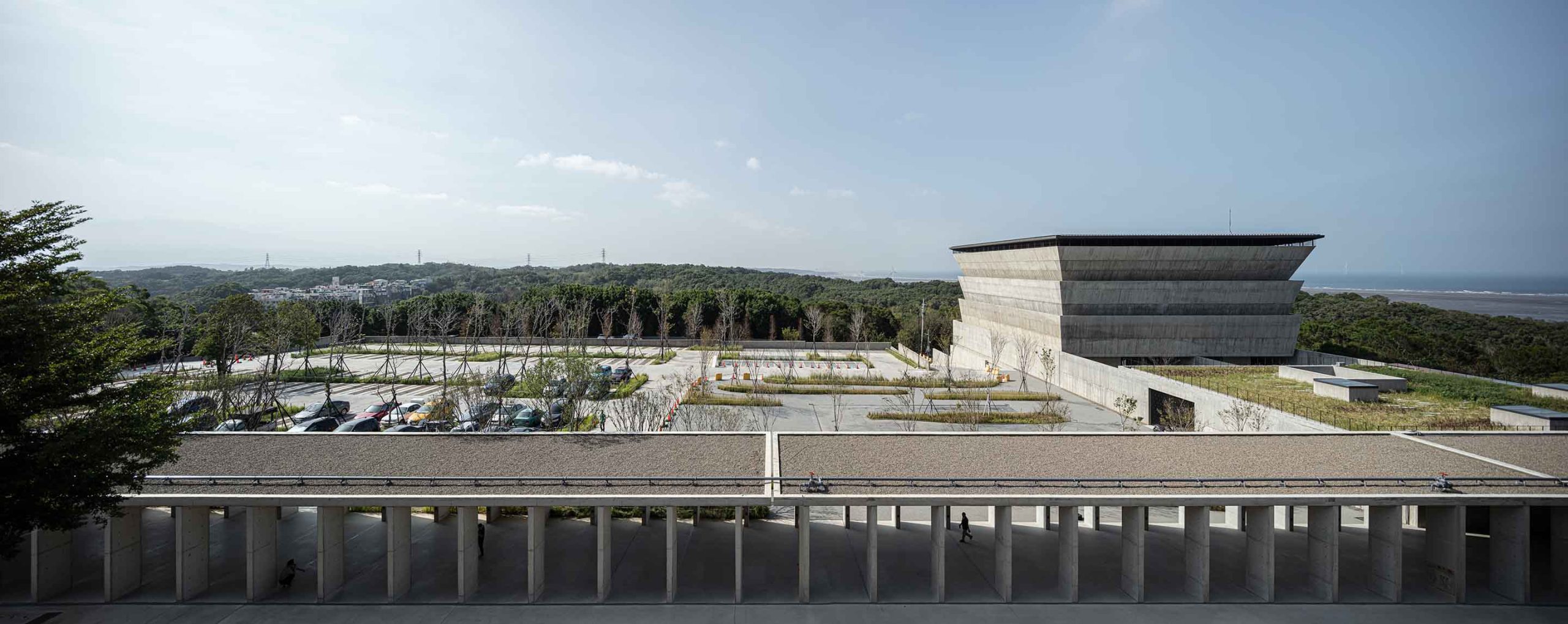
Eternal Hill Columbarium, Hsinchu, Taiwan by Behet Bondzio Lin Architekten | Photo: YuChen Chao Photography
In the second chapter ‘Feeling Grounds’, the architect takes the environment as a design solution and combines materials, craftsmanship, and tectonics to present a multi-dimensional sense of ground space. First of all, in Arsomsilp Community and Environment Architect’s Puey Ungphakorn Centenary Hall (2019) and Tha Chalom Sky Boat Library (2022) , the building continues the landscape surface and combines functional attributes to form a micro-ecological system that is harmonious with the ground, and the placed space effectively activates the original environmental interface and evokes the unique value of the place.

Puey Ungphakorn Centenary Hall, Pathum Thani, Thailand by Arsomsilp Community and Environment Architect | Photo: Pat Phuchamni

Tha Chalom Sky Boat Library, Samut Sakhon, Thailand by Arsomsilp Community and Environment Architect | Photo: Srirath Somsawat
Second, in Ambi Studio’s Hushan Reservoir Archaeological Exhibition Hall (2023) and Yuhsiu Museum of Art (2015) , the building conforms to the topography to provide visitors with an unusual viewing path. In the detour circulation, the materials and the environment create an impressive scene.
Then, The Commons Thonglor (2016) and Sala Bang Pa-In (2021) by the Department of ARCHITECTURE combined meticulous architectural craftmanship with floating and elevated forms to create more ‘ground gray spaces’ to flow the indoor-outdoor interface, and they also reflected the multifunctional ‘Tai toon’ of traditional Thai houses. Fourth, in Atelier Or’s Sparkling Market (2021) and Pavilion for Hsinchu Bus Station Plaza (2018) , the small and light structural columns release the heavy visual constraints of typical buildings so that the internal and external spaces can be integrated.
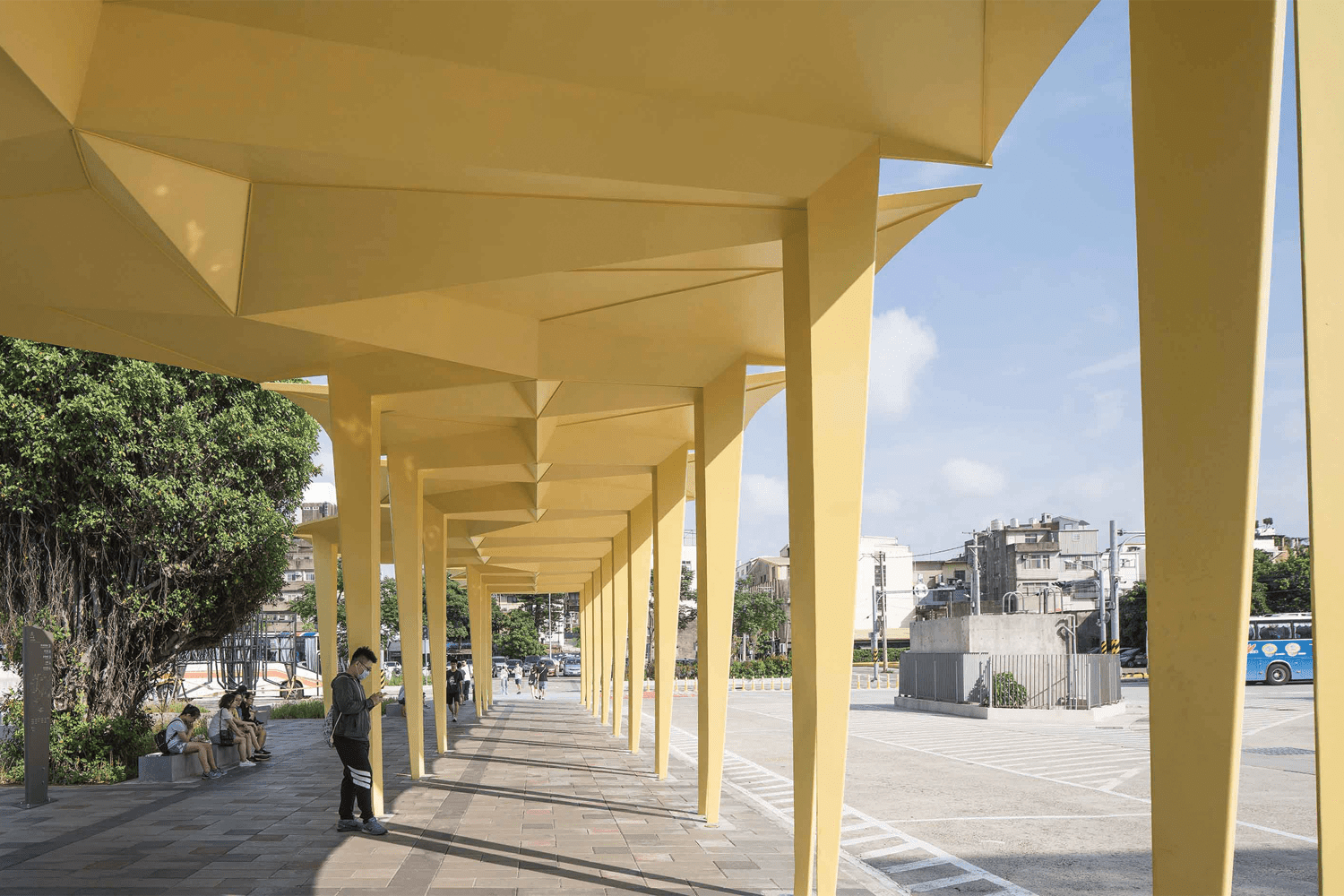
Pavilion for Hsinchu Bus Station Plaza, Hsinchu, Taiwan by Atelier Or | Photo: YuChen Chao Photography

Sparkling Market, Hsinchu, Taiwan by Atelier Or | Photo: YuChen Chao Photography
Among these four architecture firms’ works, Feeling Grounds endows the architecture with empathy for nature. The project not only shows the building as an interface between humans and the land but also provides reflections on the environment: extra-ordinary, nostalgic, vernacular, and boundaryless.
In addition, the exhibition space is surrounded by nine undulating buildings in a courtyard settlement. Its open and flowing space layout forms a vague and vivid exhibition space, and the continuous and sloping roof not only presents various visual effects; its natural light distinguishes two kinds of space fields, dark and bright, and cooperates with the eight participating architectural firms to provide a quiet and leisurely retreat, allowing visitors to return to the senses of infinite ground.
_____________
Hosts: The Association of Siamese Architects Under Royal Patronage; Taipei Economic and Cultural Office in Thailand; Chulalongkorn University – Faculty of Architecture; King Mongkut’s Institute of Technology Ladkrabang – School of Architecture, Art, and Design; King Mongkut’s University of Technology Thonburi – School of Architecture and Design; Silpakorn University – Faculty of Architecture
Co-Organizers: HAS design and research, Bangkok Art and Culture Centre, art4d, Alliance for Architectural Modernity Taiwan
Principal Curators: Jenchieh Hung, Kulthida Songkittipakdee
Participants: Architects 49 Limited, Behet Bondzio Lin Architekten, Duangrit Bunnag Architect Limited, MAYU architects, Arsomsilp Community and Environment Architect, Ambi Studio, Department of ARCHITECTURE, Atelier Or
Space Design: HAS design and research
Supporters: Alufence, Canon Thailand, Jorakay, Saint-Gobain, RichCons, FloraScape
Duration: 2023 July 18 – August 6
Opening Event: 2023 July 18, 14:00 (invitation only)
Opening Hours: Tuesday – Sunday, 10:00 – 20:00
Venue: Bangkok Art and Culture Centre LF; 939 Rama I Road, Wang Mai, Pathum Wan, Bangkok


